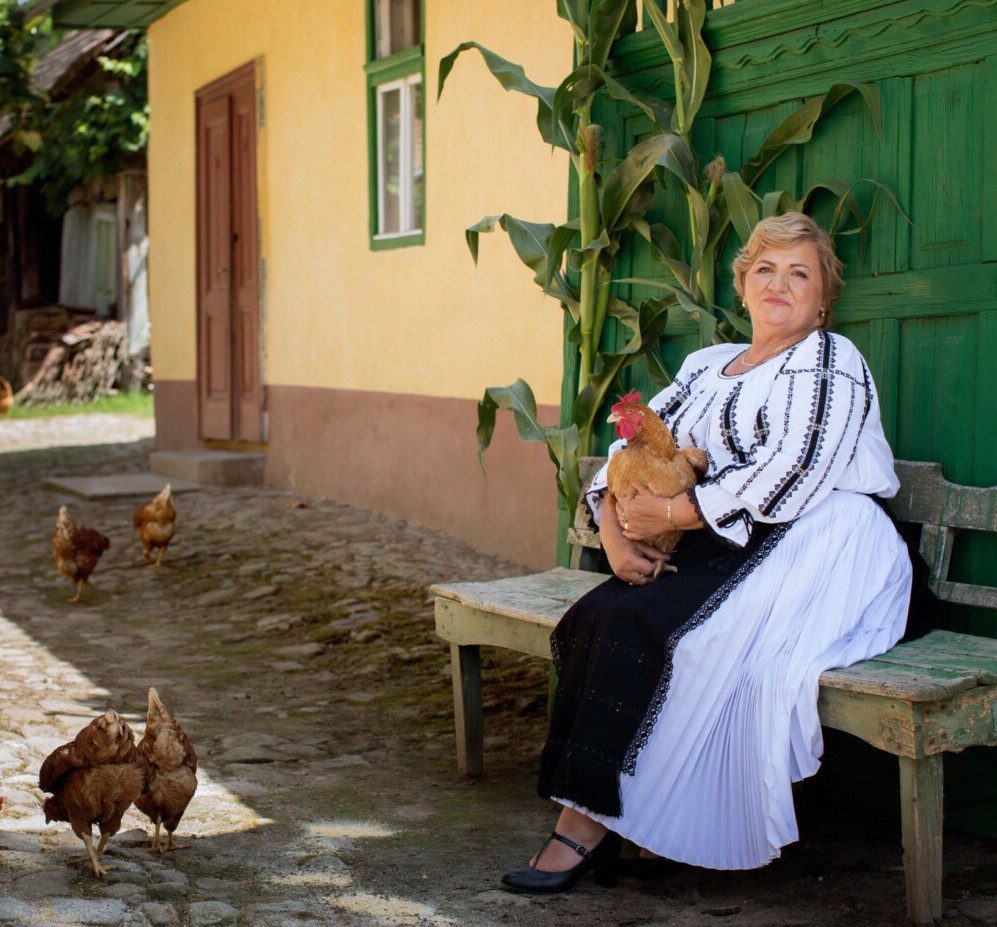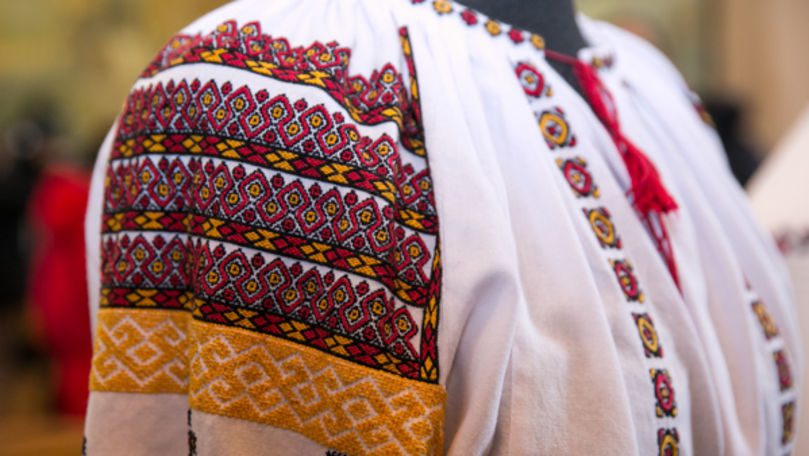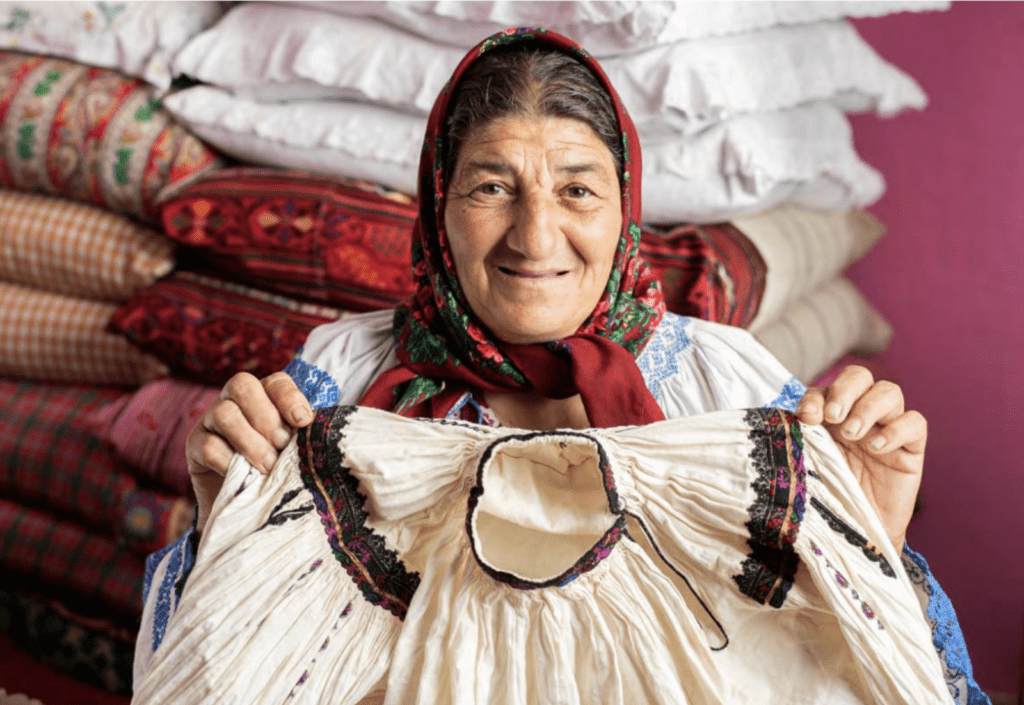No products in the cart.

The IA cu altiță Blouse
This IA cu altiță (Romanian blouse with embroidery on the shoulder), cătrință (apron) and poale ( white cotton skirt) took three and a half months for Elena Neagu to hand-embroider, hand-knit, and tailor. In this region IA is the local term for a woman’s blouse and cămașă is the term for a man’s blouse. The glass beads on this apron are specific to girls only, and today such pieces are still worn when going to church on Christmas, Epiphany and Pentecost .
The combination of designs is traditionally chosen by the embroiderer or the wearer who commissions the piece. This piece showcases the column of infinity on both the chest and the sleeves, the black stripes specific for the region (pășituri), and the teeth of the wolf. Of distinct elegance and accuracy, these geometric design elements had both aesthetic and symbolic meanings.
“On holy days and celebrations, it is like a fashion show of women and girls showcasing their outfits.”
– Elena Neagu, Mălâncrav Village, Laslea commune, Sibiu county, Romania

While each embroidered story is unique and depends on the interpretation and creativity of the maker, the presence of the teeth of the wolf and the column of infinity on the Traditional Cultural Expression suggests strength, courage, continuity, connection with the mystical and the divine, protection. These design elements are part of Traditional Cultural Expressions (textile or other) all over Romania.
A specific feature of this Blouse (IA) is the embroidery on the sleeve, marking a unique structure of the Blouse. This element is called altiță, impossible to translate in English so roughly translated as embroidery on the shoulder. The Blouse with such a particular structure has been inscribed in 2022 on the UNESCO representative list of intangible cultural heritage of humanity as an element of cultural identity in Romania and the Republic of Moldova.
Information courtesy of: WhyWeCraft(R)

Photo credits
- Elena Neagu, Courtesy of Why We Craft
- Courtesy of Ziarul de Gardă
- Courtesy of “Saving the culture of others”, 2021 by the Monumentum Association
